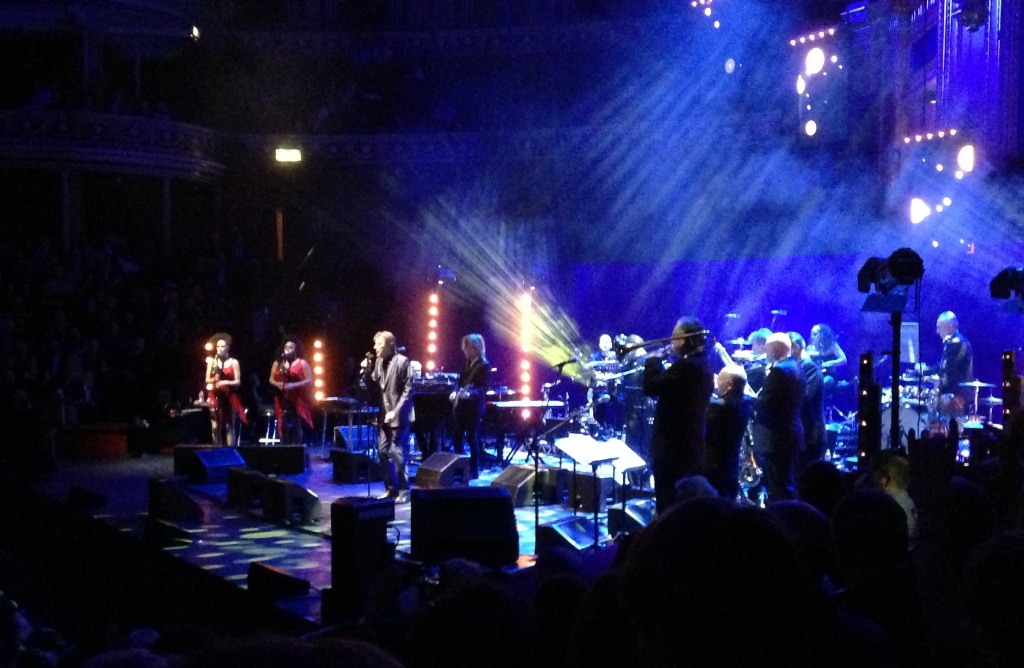City of Poets
 City of Poets is the name of a quintet led by two musicians from whom we’ll be hearing a lot more: the French pianist Cédric Hanriot and the American trumpeter Jason Palmer. The group is completed by three aces, the tenor saxophonist Donny McCaslin, the bassist Michael Janisch and the drummer Clarence Penn, and they appeared at the Pizza Express in London last night to perform their current project, a series of pieces titled The Hyperion Suite, jointly written by the two leaders and inspired by a sequence of novels — The Hyperion Cantos — by the science fiction writer Dan Simmons.
City of Poets is the name of a quintet led by two musicians from whom we’ll be hearing a lot more: the French pianist Cédric Hanriot and the American trumpeter Jason Palmer. The group is completed by three aces, the tenor saxophonist Donny McCaslin, the bassist Michael Janisch and the drummer Clarence Penn, and they appeared at the Pizza Express in London last night to perform their current project, a series of pieces titled The Hyperion Suite, jointly written by the two leaders and inspired by a sequence of novels — The Hyperion Cantos — by the science fiction writer Dan Simmons.
Each piece, Palmer told the audience, is based on one of the seven “modes of limited transposition” devised by Olivier Messaien. But the themes and settings he and Henriot devised are instantly beguiling and, although complex, not remotely academic: this is music with its roots in the Miles Davis Quintet of 1963-68, a combination of intellectual rigour, technical brilliance and graceful lyricism.
The solos were uniformly full of substance, and the structures ever-changing. The opener, for instance, began with a bass solo, moved into a classic trumpet-tenor-and-rhythm head, shifted into piano-trio mode, changed to a three-way improvisation for the two horns and the drums, morphed first into a tenor-bass-drums trio and then (with the addition of trumpet) into a pianoless quartet, and went out with what sounded like a variation on the first head.
Of the individuals, the North Carolina-born trumpeter was hugely impressive. If Ambrose Akinmusire is this generation’s Booker Little, Palmer might be the Freddie Hubbard, with the same bright strength but greater mobility and variation of phrasing, timbre and attack. Henriot comes out of Herbie Hancock, on the Bill Evans side: a player who never overplays his hand, but who, late in the evening, produced one solo that built to the sort of rocking climax in which Bobby Timmons specialised during his days with the Jazz Messengers.
McCaslin delivered several well-turned solos in the post-Shorter mode favoured by the majority of today’s young tenorists, and Janisch again showed his pronounced gifts of thoughtfulness and invention. I don’t understand why he switched for two tunes to the bass guitar, dialling in a distracting echo effect during his solos, but otherwise he was immaculate.
As for the phenomenal Penn, as sensitive and propulsive a drummer as you could wish to have in your band, he did something remarkable: nearing the climax of a McCaslin solo, he began a broken-rhythm figure on the snare drum, increasing its volume and stuttering intensity (the effect was like that of one of Art Blakey’s tidal-wave press rolls, refracted through smashed glass) until suddenly landing in intuitive unison with the saxophonist, like a pair of Olympic gymnasts nailing a dismount from the uneven bars with perfect synchronisation.
Full of such moments of delight and surprise, the evening was recorded for release on Janisch’s Whirlwind label. I can’t wait to hear it again.
* In the lo-fi photograph (left to right): Cédric Hanriot, Donny McCaslin, Mike Janisch and Jason Palmer.

